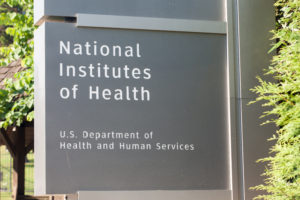By Susan Strong, Director of Communications and Patient Engagement
When a person is newly diagnosed with any disease or serious medical condition, they are often flooded both with anxiety and unfamiliar medical terms. The weight of the unknown can overwhelm. Patients diagnosed with heart valve disease hear words like: stenosis, regurgitation, heart failure, valve repair or replacement, blood thinners, tissue or mechanical valves, open heart surgery or minimally invasive procedure. And that list doesn’t even include any of the tests! Feeling unsure while navigating decisions about treatment is completely normal. If you or a loved one is in this situation, you’ve earned the right to feel anxious.
Once a cardiologist determines that a person’s heart valve disease has progressed to the stage that needs treatment, the patient is usually referred to a cardiovascular surgeon for evaluation. Some hospitals have a heart team approach, where valve patients are seen by both a cardiovascular surgeon and an interventional cardiologist working in partnership.

The difference between these two specialties is important for valve patients to understand. Cardiovascular surgeons have extensive training to perform many types of life-saving, open heart surgeries such as valve replacement and/or repair and bypass surgery (also called CABG or coronary artery bypass graft).
Interventional cardiologists are not surgeons, and they are trained to perform specialized, minimally-invasive procedures such as placing stents to open blocked arteries. Interventional cardiologists also perform certain types of mitral valve repair and catheter-based aortic valve replacements (called TAVR or trans-catheter aortic valve replacement).
Knowing the difference between these two specialties can help patients understand that the treatment options offered are specialized as well. Most cardiovascular surgeons do not perform minimally-invasive procedures. In some cases, a minimally-invasive procedure is not an option. For example, valve patients who also need coronary artery bypass grafting (CABG) require the skills of a cardiovascular surgeon, not an interventional cardiologist.
If your healthcare provider uses a heart team approach, you will most likely be evaluated by both a cardiovascular surgeon and an interventional cardiologist. It is possible to ask your referring cardiologist to send you to a heart team for evaluation.
If your healthcare system does not provide a heart team approach, you might choose to ask your referring cardiologist for two referrals, so you can consult with both a cardiovascular surgeon and an interventional cardiologist. Seeing both specialists may help you learn about your treatment options from both medical perspectives and approximate the heart team approach.
Shared decision making is key in health care centered on placing the patient’s needs first. Shared decision making is a process in which the healthcare team and the patient and care partners work together to make decisions and select tests, treatments and care plans that balance risk and expected outcomes with patient preferences and values.
When more than one option for treatment is available, you and your healthcare team can work together using shared decision making to choose treatment based on the considerations most important to you.
For those interested in more in-depth information about the heart team approach, here is some additional reading from the Journal of the American College of Cardiology:
- A Call for an Evidence-Based Approach to the Heart Team for Patients With Severe Aortic Stenosis
- The Heart Team of Cardiovascular Care




